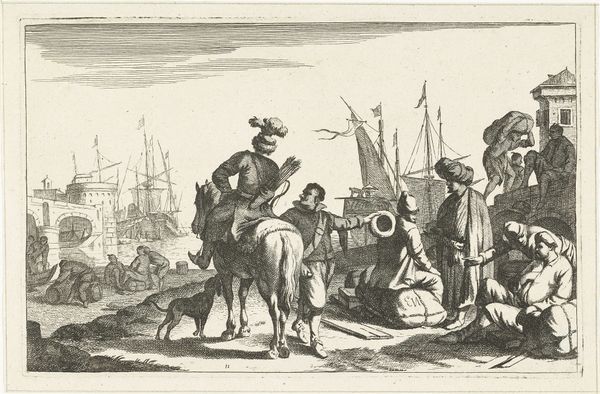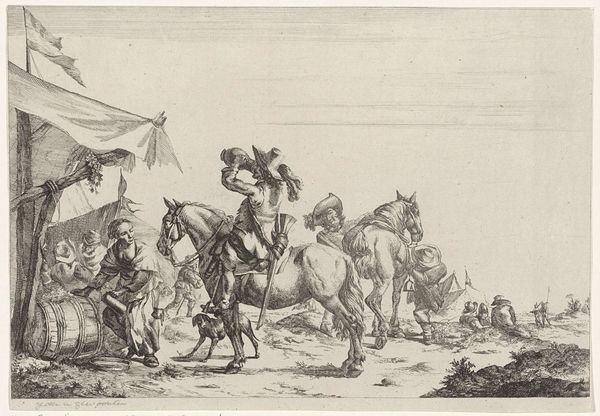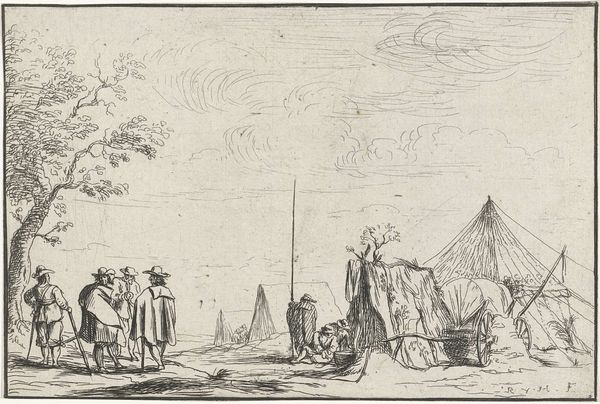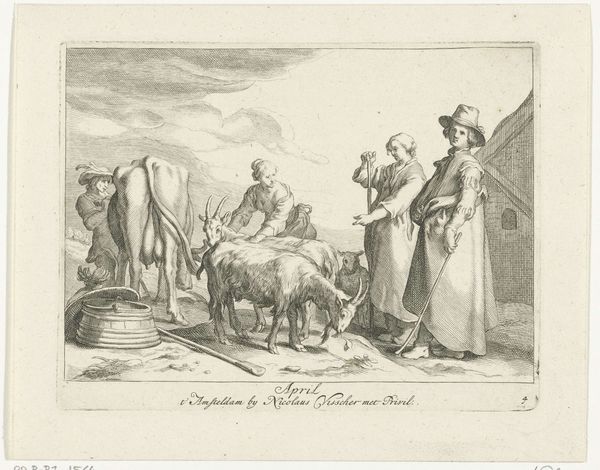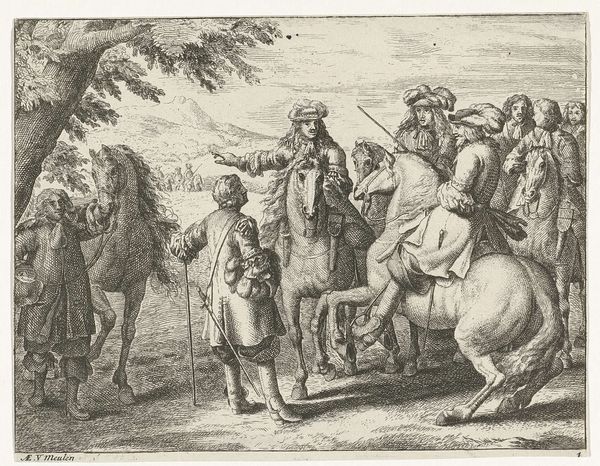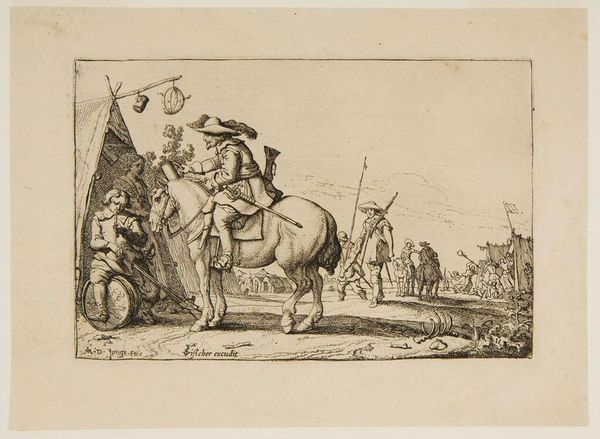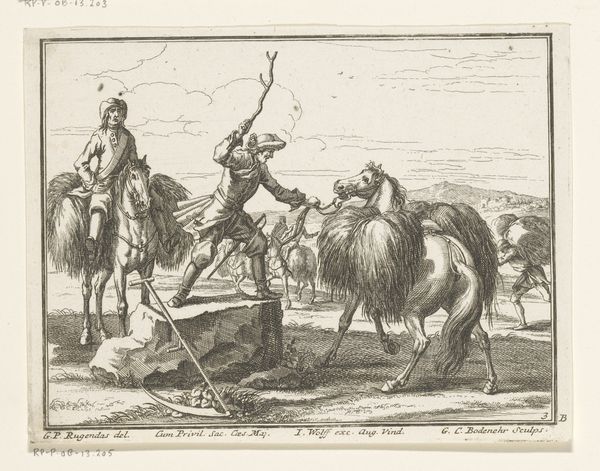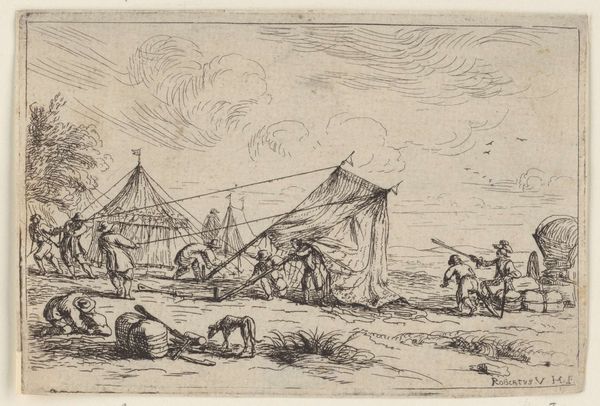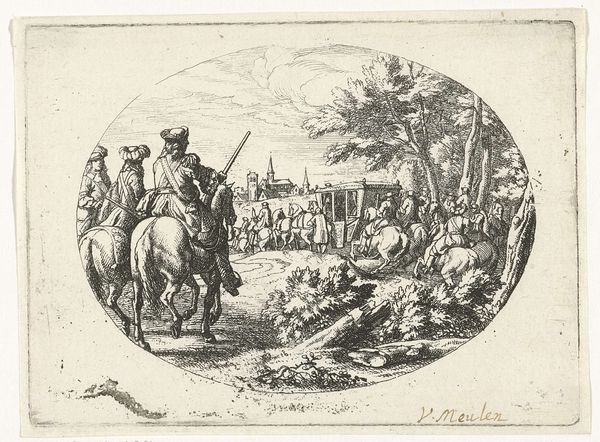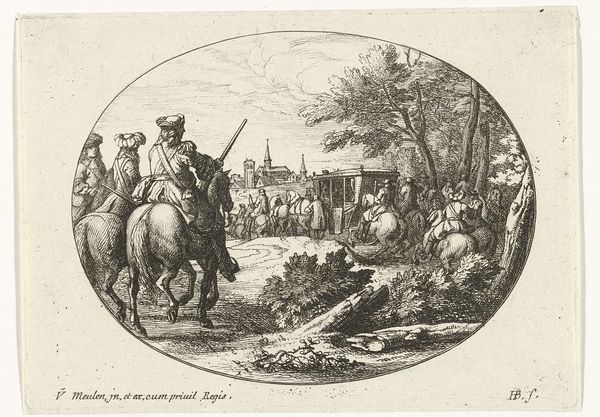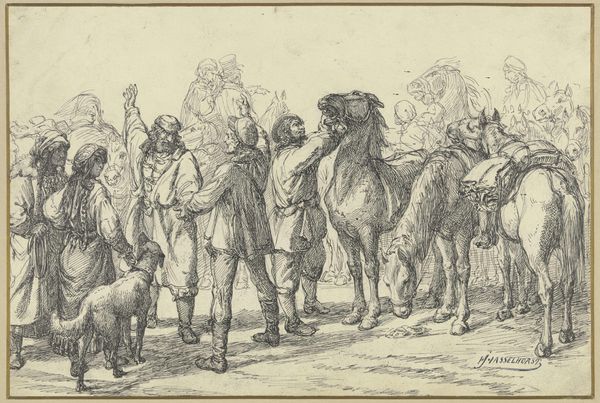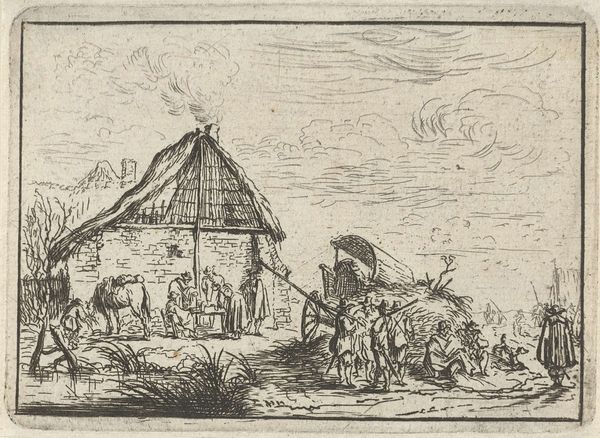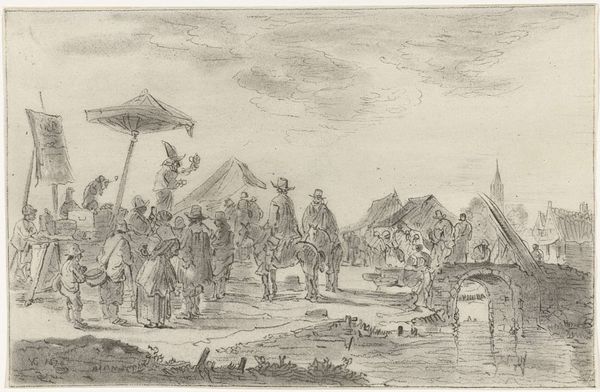
etching, engraving
#
narrative-art
#
baroque
#
dutch-golden-age
#
etching
#
landscape
#
figuration
#
genre-painting
#
engraving
Dimensions: height 191 mm, width 280 mm
Copyright: Rijks Museum: Open Domain
Curator: Looking at this scene, I immediately notice the interplay of rest and readiness, doesn’t it strike you as almost cinematic? Editor: It does! What we have here is "Ruiters rusten bij tenten", or "Cavalrymen Resting Near Tents," an etching and engraving attributed to Romeyn de Hooghe, likely created between 1655 and 1667. You can find this particular impression here at the Rijksmuseum. Curator: What catches my eye first is the foreground – the clustered figures near the tent create this wonderfully intimate space despite the looming implication of military action. Notice the incredible texture achieved purely through the density and direction of the etched lines. You can almost feel the coarse weave of the tent fabric. The social conditions surrounding the production of an etching like this is fascinating. The paper stock, the dissemination of the print - so crucial to understanding its cultural impact... Editor: Precisely! The politics of imagery at play here are quite interesting. This was during a time of relative peace for the Dutch Republic, the soldiers in the background, their long march, juxtapose this notion of leisure with subtle notes of societal unrest or preparedness in times of uncertainly. Genre painting, as it's categorized, wasn't merely a reflection, but rather an active negotiation with Dutch social identity and collective memory, what do you think about its visual role in shaping a narrative? Curator: Agreed! And what kind of social role do such meticulous works end up playing given the level of artistry in them? Editor: Excellent question. We tend to think of art during this time either existing for an elite class, or mass distributed as propaganda. I argue it can occupy this middle space; where it’s disseminated enough for consumption, but specific enough to make it a desirable commodity to obtain. Curator: That’s a refreshing take! Examining it through that economic lens, we see it speaks volumes of the aspirations and cultural landscape of the period. Editor: It is true that observing art’s engagement with our present can also illuminate different past narratives, helping understand its importance in society through history.
Comments
No comments
Be the first to comment and join the conversation on the ultimate creative platform.
